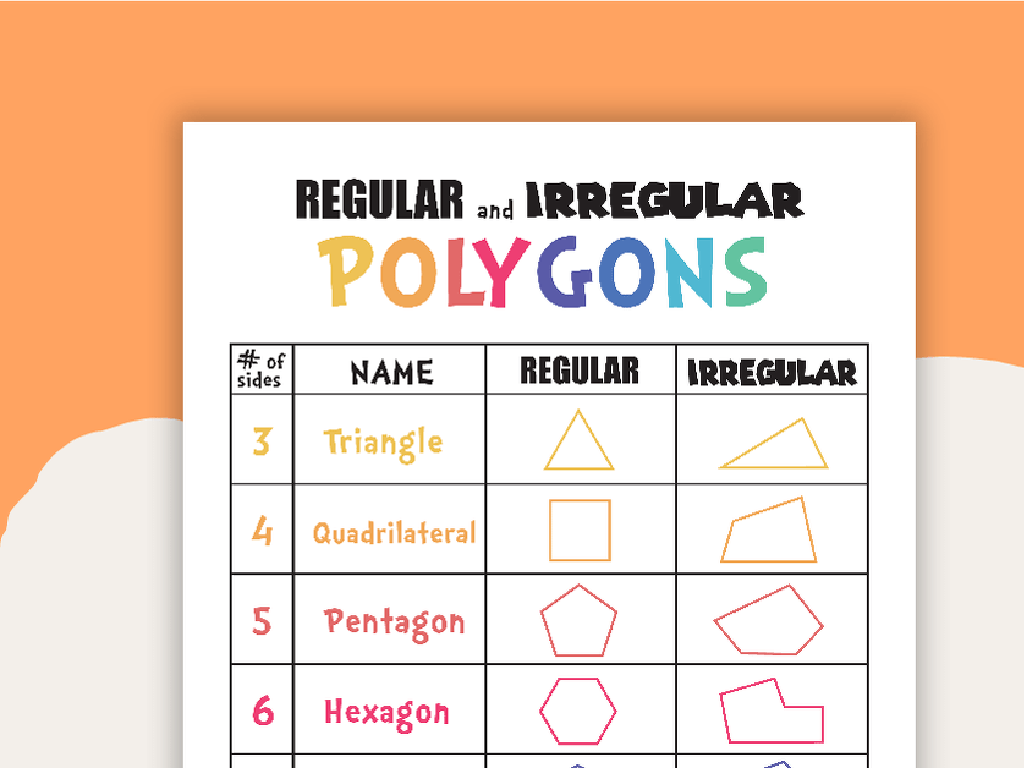Least Common Denominator
Subject: Math
Grade: Seventh grade
Topic: Fractions
Please LOG IN to download the presentation. Access is available to registered users only.
View More Content
Understanding Fractions: Least Common Denominator
– Grasp the basics of fractions
– Importance of fractions in math
– Fractions are key in math and everyday life, like cooking or dividing things.
– Exploring Least Common Denominator
– LCD is the smallest common multiple of denominators.
– Applying LCD to solve problems
– Use LCD to add, subtract, or compare fractions with different denominators.
|
Begin the lesson by reviewing the fundamental concepts of fractions to ensure a solid foundation for all students. Emphasize the relevance of fractions in various aspects of daily life and in mathematical problem-solving. Introduce the concept of the Least Common Denominator (LCD) as a crucial skill for working with fractions, particularly when it comes to operations involving fractions with different denominators. Provide examples and practice problems to illustrate how to find the LCD and use it to add, subtract, or compare fractions. Encourage students to ask questions and work through problems collaboratively.
Understanding the Denominator
– Denominator: bottom number
– It’s the ‘whole’ reference in fractions
– Represents equal parts total
– Divides the whole into equal parts
– Example: In 1/4, 4 is denominator
– 1/4 means 1 out of 4 equal parts
|
The denominator is a fundamental concept in understanding fractions, as it represents the total number of equal parts into which something is divided. For example, in the fraction 1/4, the denominator is 4, indicating that the whole is divided into 4 equal parts. It’s important for students to grasp that the denominator provides the context for the numerator, which represents how many parts are being considered. In class, reinforce this concept by illustrating various fractions with different denominators and showing how they represent parts of a whole. Encourage students to think of real-life examples where they encounter fractions, such as cutting a pizza or dividing a bag of candy.
Identifying Common Denominators
– What are common denominators?
– Denominators that are the same in two or more fractions.
– Utility of common denominators
– Helps in adding, subtracting, and comparing fractions.
– Example: 1/4 vs 1/8
– Both have denominators that are multiples of 4. LCD is 8.
– Finding the LCD
– Least Common Denominator (LCD) is the smallest common multiple of the denominators.
|
This slide introduces the concept of common denominators, which are essential when working with fractions. Understanding common denominators allows students to perform operations such as addition, subtraction, and comparison between fractions. For example, to compare 1/4 and 1/8, we find a common denominator, which in this case is 8, making it easier to see that 1/4 (or 2/8) is larger than 1/8. The slide also leads into the concept of the Least Common Denominator (LCD), which simplifies the process of comparing and combining fractions. Encourage students to practice by finding the LCD for different sets of fractions and using it to solve problems.
Understanding the Least Common Denominator
– Define Least Common Denominator (LCD)
– The smallest denominator shared by fractions
– LCD’s role in fraction operations
– Essential for adding, subtracting, and comparing
– How to find the LCD
– List multiples of denominators and find the smallest common one
– Example: LCD of 1/4 and 1/8
– Both 1/4 and 1/8 can be expressed with 8 as the denominator
|
The Least Common Denominator (LCD) is a foundational concept in fraction operations, crucial for performing addition, subtraction, and comparison of fractions. It is the smallest number that can be used as a common denominator for a set of fractions. To find the LCD, list the multiples of each fraction’s denominator and identify the smallest multiple they have in common. For example, the multiples of 4 are 4, 8, 12, … and the multiples of 8 are 8, 16, 24, … The smallest common multiple is 8, making it the LCD of 1/4 and 1/8. Students should practice finding the LCD for various sets of fractions to gain proficiency in this skill.
Finding the Least Common Denominator (LCD)
– List multiples of denominators
– For 1/3 and 1/4, list multiples: 3, 6, 9, 12; and 4, 8, 12, 16
– Identify the smallest common multiple
– The smallest multiple in both lists is 12
– Use prime factorization method
– Break larger numbers into prime factors to find LCD
– Practice with examples
– Apply these steps to find LCD for 1/6 and 1/8
|
This slide is aimed at teaching students how to find the least common denominator (LCD) for fractions, which is essential for adding and subtracting fractions with different denominators. Start by listing the multiples of each denominator until you find at least one common multiple. For larger numbers, use prime factorization to break down the denominators into their prime factors and then use those factors to determine the LCD. Provide students with practice problems to apply these methods, such as finding the LCD for 1/6 and 1/8, and ensure they understand each step of the process.
Practice Finding the LCD
– Find LCD for 1/3 and 1/5
– List multiples of 3 and 5
– 3: 3, 6, 9, 12, 15…; 5: 5, 10, 15, 20…
– Identify the smallest common multiple
– The first common multiple in both lists
– LCD for 1/3 and 1/5 is 15
– 15 is the first number that appears in both lists
|
This slide is a practical exercise for students to understand how to find the Least Common Denominator (LCD) of two fractions. Start by listing the multiples of each denominator until you find a common multiple. In this case, for 1/3 and 1/5, the multiples of 3 are 3, 6, 9, 12, 15, and so on, while the multiples of 5 are 5, 10, 15, 20, and so on. The smallest common multiple for both sequences is 15, which is the LCD. Encourage students to practice with different pairs of fractions and to explain their process of finding the LCD to ensure comprehension.
LCD in Action: Adding Fractions
– Importance of LCD in fraction addition
– LCD allows addition of fractions with different denominators
– Step-by-step guide to add fractions
– Find LCD, convert fractions, then add numerators
– Example: Add 1/4 and 1/8
– Convert 1/4 to 2/8 using LCD 8, then add to 1/8 to get 3/8
– Practice with LCD
|
Understanding the Least Common Denominator (LCD) is essential for adding fractions with unlike denominators. It is the smallest common multiple of the denominators. To add fractions, first, find the LCD, then convert each fraction to an equivalent fraction with the LCD as the denominator. After converting, add the numerators while keeping the LCD as the new denominator. For example, to add 1/4 and 1/8, we convert 1/4 to 2/8 using the LCD of 8, then add it to 1/8 to get 3/8. Provide students with additional practice problems to reinforce the concept and ensure they understand each step of the process.
Class Activity: Find the LCD!
– Pair up with a classmate
– Find the LCD for assigned fractions
– Example: For 1/3 and 1/4, the LCD is 12
– Use learned methods for LCD
– Present your findings to the class
|
This activity is designed to reinforce the concept of the least common denominator (LCD) by having students work in pairs to apply the methods taught in today’s lesson. Provide each pair with a set of fractions and instruct them to find the LCD for each set. Encourage collaboration and problem-solving as they work through the exercise. Once they have found the LCD, have them prepare a brief explanation of how they arrived at their answer to present to the class. This will help solidify their understanding and give them practice in explaining mathematical concepts. Possible sets of fractions for the activity could include 1/5 and 2/7, 3/8 and 1/6, 4/9 and 5/12, ensuring a variety of denominators to challenge the students.
Wrapping Up: The Role of LCD in Fractions
– Recap: Why is LCD crucial?
– LCD’s role in fraction operations
– LCD simplifies addition, subtraction, and comparison of fractions.
– Homework: Practice finding LCD
– Find the LCD for 10 different fraction pairs or sets.
– Be prepared to discuss your answers
|
As we conclude today’s lesson, it’s important to reinforce the concept of the Least Common Denominator (LCD) and its significance in performing operations with fractions. Understanding LCD is crucial for simplifying the process of adding, subtracting, and comparing fractions by creating a common ground. For homework, students are expected to find the LCD for 10 different sets of fractions, which will help solidify their understanding of the concept. In the next class, we will review their findings, address any difficulties encountered, and ensure that each student is comfortable with the process. This exercise will also prepare them for more complex fraction operations in future lessons.






